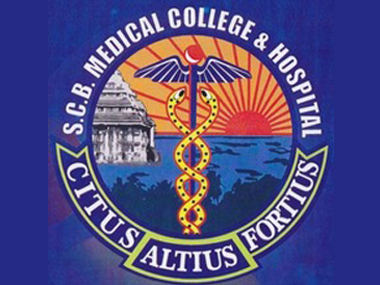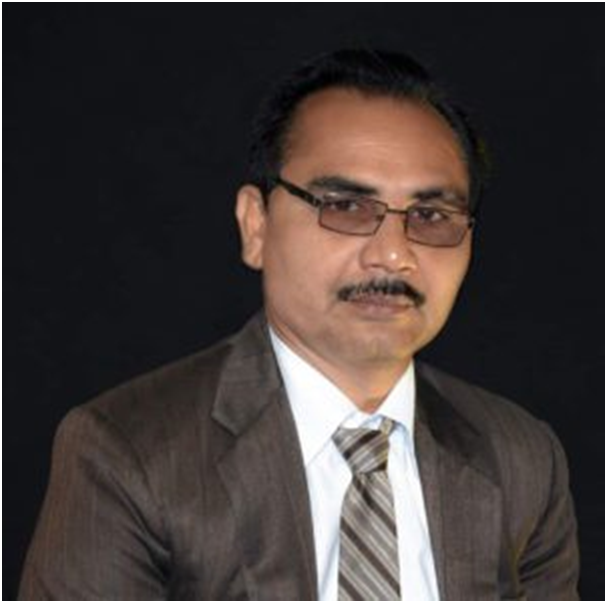This is a skill-oriented course to provide hands-on practice and project work in the study of Emergency medical technology, and it’s designed to train healthcare professionals in basic emergency lifesaving procedures & provide immediate care for a suddenly ill person.
Emergency Medical Technology
Course Attendees
Still no participant
Course Reviews
Still no reviews
Code(Credit) : CUTM 3058(3-1-0)
| Scheme | Skill for Success (SFS) |
| NSQF Level | 4 |
| Duration | 60 HRS |
| Sector | Skill Council for |
| Occupations | Phlebotomy Technician |
| Entry Qualification | Preferably +2 Science with Biology |
| Minimum Age | 18 Years |
| Aligned to (QP) | |
Course Objectives:
The objectives of this subject are:
- Describe the role and responsibilities of an EMT and wellness, as well as the safety of others.
- Demonstrate the professional attributes expected of EMTs.
- Perform the roles and responsibilities of an EMT with regard to personal safety and wellness as well as the safety of others.
- Perform the duties of an EMT with regard for medical-legal and ethical issues, including functioning under medical direction and within the scope of practice.
- Apply principles of anatomy, physiology, pathophysiology, life –span development, and therapeutic communications to the assessment and management of patients.
- Identify the need for and perform immediately life-saving interventions to manage a patient’s airway, breathing and circulations.
- Assess and manage patients of all ages with a variety of complaints, medical conditions and traumatic injuries.
After completing this program-
- Demonstrate knowledge about the heal care sector and emergency medical care services.
- Demonstrate the ability to perform clinical sills essential in providing basic emergency medical care services such as urgent need to respond the emergency calls, assurance of scene safety, precision to call other emergency people, handling different emergency scenarios from emergency to trauma emergency to mass causality to disaster management, etc.
- Demonstrate setting of an ambulance for dealing with emergency situations.
- Practice infection control measures.
- Demonstrate safe and efficient transferring and ambulation techniques.
- Demonstrate techniques to maintain the personal hygiene.
- Demonstrate action in the event of medical and facility emergencies.
- Demonstrate professional behavior, personal qualities and characteristics of an Emergency Medical Technician.
- Can join as a front-line health worker in any hospitals, nursing homes, private/government laboratories.
- Can become a Quality Assurance person in Emergency medical technology after gaining experience.
- Can do any Advance program or course in the same.
Learning Record:
The trainee will submit a Practice/Project/Learning record after each class/session.
Assessment Process:
- The assessment agencies should have an expert to conduct assessment NOS wise and every trainee should score minimum of 70% in the overall assessment.
- The assessment of the theory/knowledge will be based on a written test/viva-voice or both while the skill test shall be hands-on practical.
Course Syllabus/Contents:
MOUDLE 1:- CPR `{`Cardio Pulmonary Resuscitation`}`
- PRACTICE: How to Observe Responsiveness & Consciousness? Look Listen Feel
- Practice: - Tools used in emergency medical services
MOUDLE 2:- Manage cardiovascular Emergency. (6hr)
Practice: - Handling of cardiovascular emergencies
MOUDLE 3:- Manage cerebrovascular Emergency. (6hr)
Practice:- Handling of cerebrovascular emergencies.
MOUDLE 4:- Manage allergic reactions, poisoning or overdose. (3hr)
Practice: - First ad for allergic reaction.
MOUDLE 5:- Manage behavioural emergency. (4hr)
Practice:- Intermediate services after behavioural health.
MOUDLE 6:- Manage obstetrics / gynaecology emergencies. (5hr)
Practice:- Role of EMT in obstetrics /gynaecology emergencies.
MOUDLE 7:- Manage bleeding and shock. (6hr)
Practice: - How does EMTs treat bleeding and shock?
MOUDLE 8:- Manage soft tissue injuries and burn. (5hr)
Practice: - Emergency management of burns.
MOUDLE 9:- Manage musculoskeletal injuries. (4hr)
Practice:- Prevalence of musculoskeletal system disorders among working people
MOUDLE10:- Manage injuries to head and spine. (5hr)
Practice: - Emergency services in head and spine injuries.
MOUDDLE 11:- Manage infants, neonates and children. (4hr)
Practice: - Emergency services for infants, neonates and children.
MOUDLE 12:- Manage respiratory emergency. (5hr)
Practice: - Evaluate respiratory emergency.
MOUDLE 13:- Manage diabetes emergency. (4hr)
Practice: - Tools used to identify different outcomes related to diabetes.
List of Projects/Products/Publications :
- Design the role of EMS in an ambulance.
- Measure the time to pre-hospital emergency care for patients who are presumed to have a life threatening conditions.
- Design implementation of CPR.
- Design principles of first aid.
- Design managing of soft tissue injuries and burn.Panes strategies for diabetes.
- Panes strategies for diabetes.
- Improved respiratory management
Reference Book :
- SN Chugh,Emergency Medicine for students & practioners.
- Suresh S David,Emergency Medicine.
- Barbara Aehlert, Emeregency Medical Technician.
- Christopher Coughlin, Emeregency Medical Technician.
Session Plan:
Section 1
Session 1: CPR [Cardio Pulmonary Resuscitation ]
Section 2
Tools used in emergency medical services
Section 3
Manage cardiovascular Emergency.
- Video– https://youtu.be/Vu7hdd02ay0
- Preseentation – https://slideplayer.com/slide/5079115/
Section 4
Handling of cerebrovascular emergencies.
- Video -https://youtu.be/BR9OjTiwKSMm
- Preseentation – https://www.slideshare.net/drcd2009/emergency-care-of-stroke
Section 5
Manage allergic reactions, poisoning or overdose.
Video – https://youtu.be/Z3DM0cpPV48 Preseentation –Section 6
First ad for allergic reaction.
Section 7
Manage behavioural emergency.
- Video – https://youtu.be/Iiqyc-Zrf0Q
- Preseentation – https://www.slideshare.net/paramedicbob/behavioral-emergencies
Section 8
- Module-2 Essential Physics:Topic: IntroductionNotes : 2-Roentgen.pptVideo: X-RAY-INVENTION.mp4

Section 9
Manage obstetrics
- Video – https://youtu.be/w0iDfcAYZWc
- Preseentation – https://www.slideserve.com/diamond/management-of-obstetric-emergencies
Section 10
Gynaecology emergencies
- Video – https://youtu.be/EHyvlo1ZljM
- Preseentation – https://www.slideshare.net/drbarai/gynaecological-emergencies-47596338
Section 11
Role of EMT in obstetrics /gynaecology emergencies.
Section 12
Manage bleeding shock
- Video – https://youtu.be/MZQ7nYsK11Q
- Preseentation – https://www.slideshare.net/paramedicbob/bleeding-and-shock-8406171
Section 13
Manage soft tissue injuries
- Video – https://youtu.be/3A5Py7Ml6uU
- Preseentation – https://www.slideshare.net/dearqamar/soft-tissue-injurr-management
Section 14
Management of burn
- Video – https://youtu.be/W41pEjNNRyo
- Preseentation – https://www.slideshare.net/doctorimranjaved/management-of-burns
Section 15
Manage musculoskeletal injuries.
- Video – https://youtu.be/RAIJlRa51iM
- Preseentation – https://slideplayer.com/slide/7406861/
Section 16
Prevalence of musculoskeletal system disorders among working people
- Video – https://youtu.be/0qksc4kqSjM
Section 17
Manage injuries to head and spine.
- Video – https://youtu.be/pxXhPpAY-lQ
- Preseentation – https://www.slideshare.net/paramedicbob/injuries-to-the-head-and-spine
Section 18
Emergency services in head and spine injuries.
- Video – https://youtu.be/ah-uE09odK4
- Preseentation – https://www.slideshare.net/paramedicbob/injuries-to-the-head-and-spine
Section 19
Emergency services for infants, neonates and children.
Video –
Preseentation –Section 20
Manage respiratory emergency.
Video –
Preseentation – https://www.slideshare.net/DrSujayPatil1/management-of-respiratory-emergenciesSection 21
Evaluate respiratory emergency
Section 22
Manage diabetes emergency.
Video –
Preseentation – https://www.slideshare.net/jameswheeler001/diabetic-emergency-managementSection 23
Tools used to identify different outcomes related to diabetes.
Video– https://youtu.be/UREs_maAyYc Preseentation – https://www.slideshare.net/isiptan/tools-in-improving-adherence-to-treatment-in-diabetes- List of Assignments(All have to complete the below Assignments)
- Assignment 1: Define CPR.
- Assignment 2: Explain Manage cardiovascular Emergency.
- Assignment 3: Gynecology emergencies.
- Assignment 4: Explain how to manage bleeding shock.
- Assignment 5: Explain Management of burn.
- Assignment 6: Explain Role of EMT in obstetrics /gynecology emergencies.
- Assignment 7: Explain Manage respiratory emergency.
- Assignment 8: Explain Manage diabetes emergency.
Industry Partnership :




Latest News & Student Testimonials
Media
Our Main Teachers

Sunil Kumar Jha is working as the Dean of School of Paramedics and Allied Health Sciences at Centurion University of Technology and Management since 2016. His major areas of expertise are medical diagnostics, clinical pathology, diagnostic bacteriology, histopathology and patient safety. He has completed MBA-HMGT, MLT, DAF, MHD and some of the courses in Alternative […]



